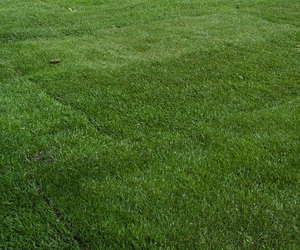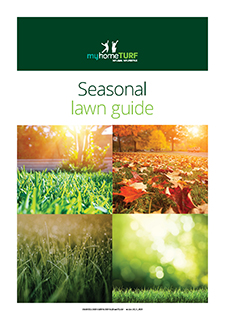How to repair your lawn
You’ve put a lot of effort into your lawn, but it doesn’t look as good as it should. Before you become disheartened, look at this checklist to see if there’s something else ...

 Regardless of your grass type, whether you have a Buffalo Grass, Kikuyu, Couch or Zoysia lawn, an uneven surface really lets down the entire appearance of a home. It is unsightly, mows poorly, is prone to scalping from mowing and, in some cases, may even become a tripping hazard.
Regardless of your grass type, whether you have a Buffalo Grass, Kikuyu, Couch or Zoysia lawn, an uneven surface really lets down the entire appearance of a home. It is unsightly, mows poorly, is prone to scalping from mowing and, in some cases, may even become a tripping hazard.
Levelling an uneven lawn is usually straight forward, however as there are several methods it is always best to adjust the type of repair used to match the type of unevenness in the lawn.
As with all lawn repairs – repairing uneven lawns should be done at the time of the year when the grass is actively growing. The beginning of spring until mid-autumn is suitable for this type of work. Leaving it too late into autumn may result in soil being left on the lawn surface for the winter until the grass begins growing again in the spring when the lawn finishes repairing itself.
Smaller indentations in lawns are most easily repaired by top dressing the affected area. The best top dressing soil would be the same type of soil which is already under the lawn. Therefore if similar soil can be obtained from a garden bed on the property – this would be the first option. The next best option would be to use a free flowing clean sand. Sand allows water to continue to flow freely in the soil surface – alternatively, if an organic soil were used then there could be potential for creating water resistance in the repaired area.
Top dressing should always be done conservatively. Apply a little soil or sand to the area – let the lawn repair for a few weeks and then repeat the process as required. Only around a centimetre of soil should be applied when top dressing.
Deeper depressions in the lawns surface will require a different method of levelling. This is because if a large amount of soil was placed on top of a lawn it may create further problems for the turf, both immediate and long term.
Putting large amounts of soil on top of grass may kill the lawn in the area treated. Or, if it does repair, a layering effect may occur which can create a layer of new lawn and thatch on top of a soil filling – which then sits on top of the dead layer of lawn and thatch. This often creates either a water repellent effect under the lawn, of a water trap. Either way – it leaves your lawn subject to poor health and potential problems in the future.
The lift and fill method of repairing uneven lawns is for repairing deep depressions. The lawn in the affected area is cut into a strip shape (like roll-on lawn) using a spade. The spade is then used to dig underneath and lift out the affected area to a depth of around 4 – 5 cm in the soil.
Clean fill or sand is then added to the soil and the lawn is replaced on top – increasing it’s height and bringing the lawn close to a level surface again. Frequent watering should be kept up to the repaired area for the first few weeks until the roots are re-established. Any slight unevenness remaining can be fixed with some light top dressing.
Sign up for our Newsletter to receive your free guide.
